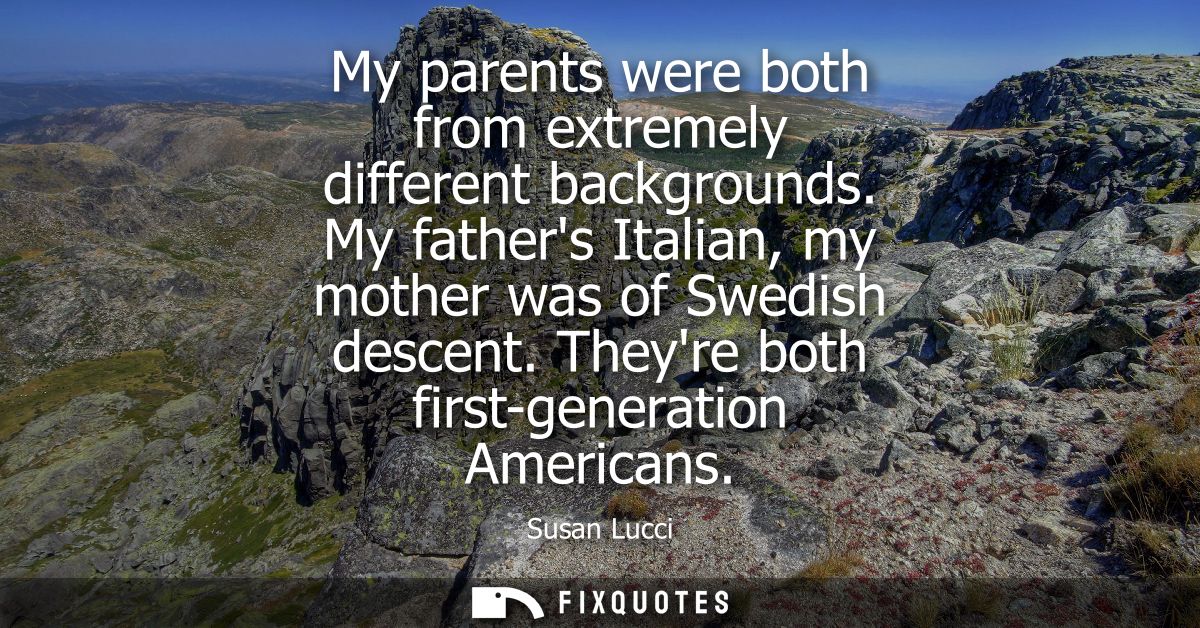"My parents were both from extremely different backgrounds. My father's Italian, my mother was of Swedish descent. They're both first-generation Americans"
About this Quote
Two narratives of origin meet here: a Mediterranean lineage marked by Italian heritage and a Nordic lineage shaped by Swedish descent. The pairing signals not only cultural contrast, language, cuisine, religion, tempo of life, but also a distinctly American synthesis. Calling them both first-generation Americans positions them at a hinge point: they were raised in the United States by immigrant parents, negotiating the pull of ancestral customs while absorbing the norms of a new country. That dual allegiance often produces a heightened awareness of identity, etiquette, and aspiration, as children learn to translate between worlds.
Italian and Swedish traditions offer vivid and sometimes opposing textures. Southern European communal warmth, family centrality, and expressive communication might stand beside Scandinavian restraint, egalitarianism, and understated style. The home becomes a laboratory for reconciling feast-day abundance with minimalist sensibility, Catholic feast tables with Lutheran simplicity, animated storytelling with quiet understatement. Such differences can generate friction, but they can also widen the emotional and cultural vocabulary of a family, teaching nuance, curiosity, and tolerance.
First-generation status matters. It implies parents who likely spoke English as their primary language yet carried inherited idioms, recipes, rituals, and expectations. There is often a deep gratitude for opportunity paired with pressure to excel, an ethic of hard work, thrift, and self-presentation. Within that framework, children frequently become ambassadors and interpreters, absorbing code-switching skills and the capacity to read a room, assets in public-facing professions and in navigating American pluralism.
The statement affirms the American promise as a meeting ground where distinct histories retain their signatures without remaining sealed off. Heritage is not erased; it is juxtaposed and recomposed. The result is a layered identity: not half-Italian and half-Swedish so much as wholly both, and American through the act of bridging. It celebrates the everyday work of blending difference into belonging, suggesting that personal identity can be both rooted and expansive.
More details
About the Author

